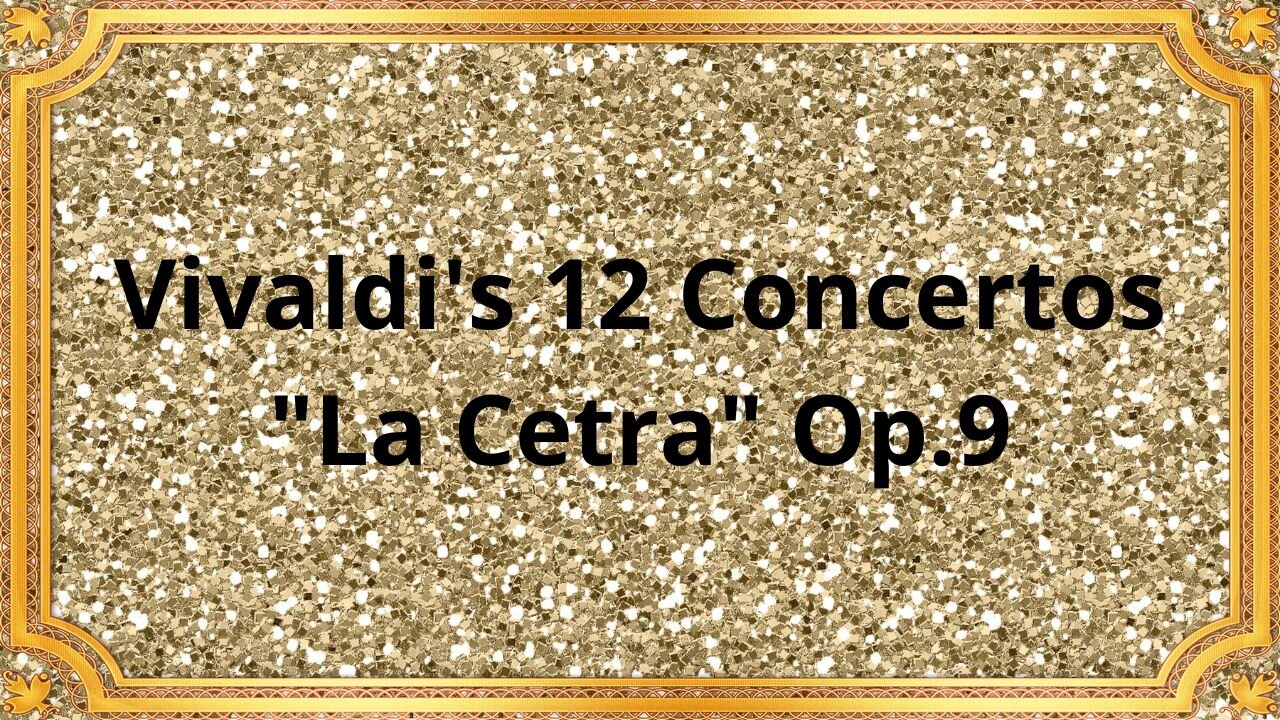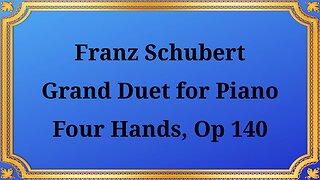Premium Only Content

Vivaldi's 12 Concertos "La Cetra" Op.9:
Vivaldi's 12 Concertos "La Cetra" Op.9: A Masterpiece of Baroque Music
Antonio Vivaldi, an Italian composer, and virtuoso violinist is well-known for his contributions to Baroque music. One of his most celebrated works is the set of 12 concertos, titled "La Cetra" Op.9.
Vivaldi composed "La Cetra" Op.9 in 1727 while he was the maestro di violino at the Ospedale della Pietà in Venice. The Ospedale della Pietà was a charitable institution that provided musical education to orphaned girls. Vivaldi composed much of his music for the young girls' orchestra at the Ospedale.
"La Cetra" Op.9 consists of 12 concertos, each in three movements: fast-slow-fast. The title "La Cetra" means "the lyre" in Italian, and it refers to the ancient Greek musical instrument. Vivaldi dedicated the concertos to Emperor Charles VI of Austria, who was also a music lover.
"La Cetra" Op.9 is a prime example of Vivaldi's style of composition, which features virtuosic solo passages, intricate harmonies, and dramatic contrasts between sections. Each concerto highlights a different solo instrument, including violin, cello, oboe, flute, and bassoon.
The first movement of each concerto typically features a lively ritornello, or recurring musical theme, followed by solo passages. The second movement is usually a slow and expressive aria, highlighting the solo instrument's lyrical capabilities. The final movement is a fast and lively dance-like piece, often featuring virtuosic solo passages.
Vivaldi's "La Cetra" Op.9 had a significant influence on Baroque music and beyond. The virtuosic solo passages and dramatic contrasts between sections were highly influential in the development of the concerto form. The concertos also inspired many later composers, including J.S. Bach, who transcribed some of Vivaldi's works for keyboard.
Vivaldi's 12 Concertos "La Cetra" Op.9 is a masterpiece of Baroque music. Composed for the young girls' orchestra at the Ospedale della Pietà, the concertos feature virtuosic solo passages, intricate harmonies, and dramatic contrasts between sections. The influence of "La Cetra" Op.9 can still be heard in music today, making it a must-listen for all music lovers.
1. C major - Allegro-largo-allegro 00:00
2. A major - Allegro-largo-allegro
3. G minor - Allegro non molto 08:46
4. E major - Allegro non molto 18:37
5. A minor - Adagio-presto-largo-allegro 30:22
6. A major - Allegro-largo-allegro 39:38
7. B flat major - Allegro-largo 49:30
8. D minor - Allegro-largo-allegro 57:05
9. B flat major - Allegro-largo 1:07:16
10. G major - Allegro-largo 1:15:33
11. C minor - Allegro-adagio-allegro 1:27:07
12. B minor - Allegro non molto 1:35:33
-
 24:30
24:30
Classical music_Music Inspiration
1 day agoFranz Schubert Grand Duet for Piano Four Hands, Op. 140
321 -
 LIVE
LIVE
Price of Reason
11 hours agoDESPERATE Gavin Newsom SUES Trump! Disney Fantastic Four to FLOP? Asmongold Faces BACKLASH Again!!
16,211 watching -
 3:48:12
3:48:12
Akademiks
4 hours agoDay 2/30. Drake Challenges UMG and calls them Desperate. Ye Backs Drake. Lil Wayne Dont Fw Superbowl
66K3 -
 8:06:34
8:06:34
MyronGainesX
21 hours ago $22.64 earnedKarmelo Anthony Merch, Ashley EXPOSES Elon, Filipino President Punishes Vitaly, Iran War Pause!
59.8K9 -
 2:41:54
2:41:54
TimcastIRL
7 hours agoMASS SHOOTING At Florida State, Anti Trump Rumors ERUPT, MANGIONE EFFECT w/ Maggie Moda| Timcast IRL
191K108 -
 2:36:29
2:36:29
The Illusion of Consensus
1 day agoExploring Holistic Psychiatry with Dr. Aruna Tammala: Nervous System Regulation, Diet, Supplements, Self-love, and Social Connection
26K -
 2:44:57
2:44:57
Laura Loomer
6 hours agoEP115: Democrats' Pet Muslims Bite Back
46.9K15 -
 18:37
18:37
SantaSurfing
9 hours ago4/17/2025 - Trouble for Tish/Google/Jerome! Trump stops a war!
31.5K16 -
 49:39
49:39
Man in America
14 hours agoThey’re Feeding Us POISON and Calling It Dinner w/ Kim Bright
51.1K15 -
 3:40:07
3:40:07
BrancoFXDC
4 hours ago $2.74 earnedWarzone Rounds - DAY 10 of no Internet
30.9K2